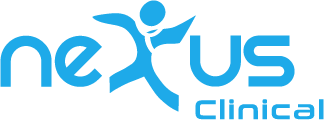
In the evolving landscape of healthcare, patient engagement has emerged as a crucial element in achieving superior health outcomes. Active patient participation in their healthcare journey, facilitated by tools such as patient portals, kiosks, and satisfaction surveys, appointment reminders, improved patient communication can significantly enhance health outcomes and overall patient satisfaction.
This article delves into the importance of patient engagement solution and how it can be leveraged for better health outcomes.
Understanding Patient Engagement
Patient engagement refers to the process of involving patients in their care, thereby empowering them to make informed decisions about their health. It is a collaborative approach that fosters a healthy partnership between patients and healthcare providers1. This engagement can be facilitated through various tools and strategies, including patient portals, kiosks, satisfaction surveys, and patient education.
Patient Portals and Kiosks: Facilitating Patient Engagement
Patient portals are secure online platforms that provide patients access to their health records, appointment schedules, prescription refills, and direct communication with healthcare providers. These portals foster active patient participation by providing them with easy access to their health information2.
Similarly, patient kiosks are digital platforms available at healthcare facilities that allow patients to check in, update personal information, and make payments. These kiosks streamline administrative tasks, allowing patients to take control of their healthcare experience.
Satisfaction Surveys: Gauging Patient Experience
Satisfaction surveys provide valuable insights into the patient’s experience and their level of engagement. They offer a platform for patients to express their views on the quality of care received, which can help healthcare providers identify areas for improvement and enhance patient engagement.
Patient Education: Empowering Patients
Patient education is a critical component of patient engagement. By educating patients about their condition, treatment options, and preventive measures, healthcare providers can empower them to make informed decisions about their health. This education can be delivered through various mediums, including brochures, videos, workshops, and digital platforms.
Patient Payments: Encouraging Financial Responsibility
Transparent and simplified patient payment systems can also enhance patient engagement. By providing clear, itemized bills and multiple payment options, healthcare providers can encourage patients to take financial responsibility for their healthcare, leading to increased engagement.
Patient Engagement: Driving Better Health Outcomes
Engaged patients are more likely to adhere to treatment plans, attend follow-up appointments, and adopt healthier lifestyles. They are also more satisfied with their care, leading to improved health outcomes1.
Studies have shown that higher levels of patient engagement are associated with better self-management of chronic conditions, lower hospital readmission rates, and improved physical and mental health outcomes2.
Conclusion
Patient engagement is a powerful tool in the quest for better health outcomes. By leveraging tools like patient portals, kiosks, satisfaction surveys, and comprehensive patient education, healthcare providers can foster active patient participation. Additionally, transparent patient payment systems can encourage patients to take financial responsibility for their health, further enhancing engagement.
Nexus EHR is a powerful tool for enhancing patient engagement. It offers a secure patient portal that allows patients to access their health records, schedule appointments, and communicate with their healthcare providers. The software also supports telemedicine, enabling remote consultations.
Additionally, its automated reminders for appointments and medication refills ensure patients stay on track with their treatment plans. By facilitating these interactions, Nexus EHR empowers patients to take an active role in their healthcare, leading to improved outcomes and satisfaction.
In conclusion, patient engagement is not just a buzzword but a key driver of improved health outcomes. By empowering patients to actively participate in their healthcare journey, we can pave the way for a healthier future.
Footnotes
- Carman, K. L., Dardess, P., Maurer, M., Sofaer, S., Adams, K., Bechtel, C., & Sweeney, J. (2013). Patient and family engagement: a framework for understanding the elements and developing interventions and policies. Health Affairs, 32(2), 223-231. https://www.healthaffairs.org/doi/10.1377/hlthaff.2012.1133
- Greene, J., Hibbard, J. H., Sacks, R., Overton, V., & Parrotta, C. D. (2015). When patient activation levels change, health outcomes and costs change, too. Health Affairs, 34(3), 431-437. https://www.healthaffairs.org/doi/10.1377/hlthaff.2014.0452






